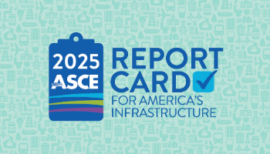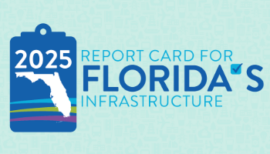Inland Waterways
Startup Uses Drone for Cleaning Water, Collecting Data
Riverside and San Bernardino (Inland Empire) Counties are among the fastest growing areas in California. Not only is commercial and industrial development in the region booming, but these counties continue to provide affordable housing to families moving east from high-cost coastal cities.
Riverside County is now the fourth largest County by population in California with more than two million people taking advantage of nearby mountains, hiking, bike trails, the Temecula wine country, and desert resorts. San Bernardino County is the largest county by area and in the United States (excluding boroughs in Alaska) with 20,105 square miles. The county is commonly divided into the valley, mountain, and desert regions, three distinct areas with different characteristics. The valley region contains most of the county’s incorporated areas and population, whereas the mountain region is primarily comprised of public lands and summer and winter resort towns such as Big Bear. The desert region is the largest region (approximately 93% of the county’s land area) and includes parts of the Mojave Desert.
A sustainably constructed and well maintained infrastructure network is vital to supporting the entire Inland Empire and its varied industries and growing population. Thanks to major investments over the past 10 years, the regional transportation network has received some attention and improved levels of service. However, sustainable funding is needed to maintain these upgraded assets and also to shift attention to our deteriorating local streets.
Meanwhile, solid waste collection, processing, and diversion, which are critical to maintaining a healthy environment in the Inland Empire, require continued maintenance. New waste diversion laws mandating increased organic diversion and composting will require an influx of investment in infrastructure for the collection, processing, and composting of organic materials. Finally, wastewater and drinking water infrastructure in the region is in good shape, water agencies are finding creative ways to optimize and maximize system capacity but aging infrastructure still needs some attention.
The 2019 Inland Empire Report Card is designed to help residents and decision-makers understand the state of our infrastructure and prioritize necessary maintenance and sustainable improvements. This Report Card serves as a tool to start the conversation on how we can continue to improve our existing streets, airports, landfills, drinking water, wastewater and stormwater systems, and be better prepared for future growth and climate change impacts to our region.
Download The GradesWe can no longer afford to defer investment in our nation’s critical infrastructure systems.
Smart investment will only be possible with leadership, planning, and a clear vision for our nation’s infrastructure.
We have to utilize new approaches, materials, and technologies to ensure our infrastructure is more resilient.

2025 Drinking Water & Wastewater Webinar: Key Insights from ASCE
December 18, 2025
Exploring Infrastructure Grades, Challenges, and Solutions for U.S. Drinking Water & Wastewater Systems Overview of the Webinar On December 11, ASCE hosted an insightful webinar...

West Virginia 2025 Infrastructure Report Card: ASCE Grades & Key Needs
December 17, 2025
On Wednesday, December 17, the West Virginia Section of the American Society of Civil Engineers (ASCE) released its 2025 Report Card for West Virginia’s Infrastructure...

Florida’s Infrastructure Report Card: A ‘C+’ and Climbing
December 10, 2025
The 2025 Report Card for Florida’s Infrastructure is out, and the Sunshine State earned a ‘C+’. Florida joins Georgia, Nevada, Utah, and Wisconsin as the...
Select your home state, and we'll let you know about upcoming legislation.
"*" indicates required fields